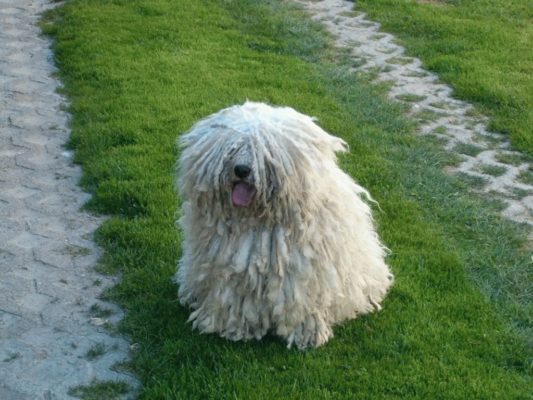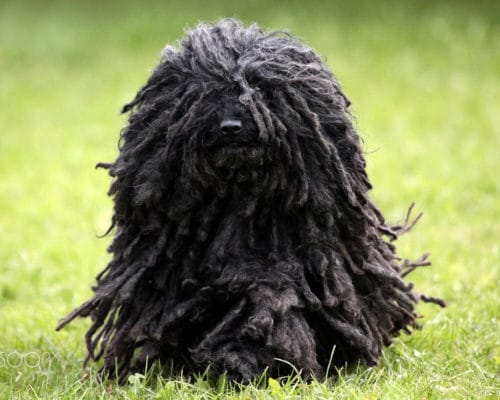Puli

The Hungarian Puli is an energetic and hardy dog. Sometimes he is very independent and does not behave the way his owner would like him to act. His loyalty and courage mean that he will often try to take charge of a situation. If he feels his people may be in danger, although this is a beautiful trait, it needs to be managed because Pulis is suspicious of strangers and can be overly sensitive and slightly angry.
Table of Contents
Breed Information
| Another Name | Hungarian Puli |
| Origin | Hungary |
| Height | Males 39-45 cm Females 36-42 cm |
| Weight | Males 13-15 kg Females 10-13 kg |
| Fur | Thick, very curly, twisted into cords |
| Color | Black, black with a rusty red or gray tint, deer, gray, pearl white |
| Lifespan | 12-13 years |
| FCI Classification | Sheepdogs and Cattledogs (except Swiss Cattledogs) |
| Group | Dogs for children, guard dogs |
| Price | From $600 |
Breed Photos
Origin History
The Magyars, nomads from Central Asia, settled in the Carpathian Basin region that was to become modern-day Hungary about 1100 years ago and brought several breeds of dogs with them. While they survived mainly by farming, they were also hunters and used dogs to catch rabbits and birds. The Magyars had two types of dogs that were important in caring for a flock of sheep. One was a larger guardian breed that could be brought into action against predators, the slugs. It is believed that the history of the slug can be traced back even further. Thanks to archaeological evidence, a similar small dog with laced hair were found in a 6,000-year-old tomb of a shepherd in Iran.
Although the Puli was a skillful working dog, the Puli demand underwent a colossal decline in the nineteenth century as farming methods changed. The breed was essentially rediscovered by Dr. Emil Reitzitz of the Budapest School of Veterinary Medicine in 1912. It was subsequently brought back from the brink of extinction through an intensive breeding program. Puli suffered further setbacks after the subsequent world wars. In the 1930s, breeding continued on a large enough scale to ensure the breed’s survival. The Puli remains something of a niche breed, with fewer than 100 individual dogs registered by the Kennel Club each year.
Appearance
The slug’s appearance is somewhat deceptive because it is difficult to appreciate the dense fur’s body structure. It is a medium-sized dog, its body only one-third of its visible width. It is relatively thin and light. It has a small, narrow skull and a straight, slender muzzle. Its nose is short and black, and its little lips are just as pigmented. The eyes, usually concealed, are dark brown, of medium size, and planted obliquely. His ears are at eye level and have a broad base and a blunted V-shape.
Puli has a short and intense neck. Its long chest is very well curved. Puli’s tail is long, but it isn’t easy to appreciate, as it is generously covered with fur. The breed’s athleticism is evident in its well-defined, muscular limbs, and it has a lively, energetic gait.
While puppies have a soft, wavy coat, stiffer hair and soft undercoat appear over time. “Cords” of hair begin to form by one year of age. These cords take up to four years to fully develop, at which point they may reach the ground.
Although breed standards have recognized different size categories for slugs in the past, males should now be between 39 and 45 cm tall and females between 36 and 42 cm. Males are also significantly heavier at 13-15 pounds than the typical range of 10-13 pounds for females.
Character
The Hungarian Puli is an energetic and hardy dog. Sometimes he is very independent and does not behave the way his owner would like him to act. His loyalty and courage mean that he will often try to take charge of a situation. If he feels his people may be in danger, although this is a beautiful trait, it needs to be managed because Pulis is suspicious of strangers and can be overly sensitive and slightly angry.
Because of his history of working with other dogs, he has good canine social skills. He is a very reliable dog for children of all ages. Unfortunately, his tendency to see small pets as prey means he cannot be kept with cats or other animals.
Care
The dog does not require any special care. It needs to be washed periodically only as it gets dirty. Pulis do not emit an unpleasant odor. Proper Puli care is attentive to the pet’s ears; they will need to be cleaned periodically. Keep an eye on the dog’s claws as well. Puli puppies are accustomed to mandatory hygiene procedures from early childhood.
Training
A well-trained Puli is an obedient dog that can work with the herd and show up in obedience tests. However, the tendency to think independently means that owners must make training enjoyable. Training should be broken up into short sessions to prevent boredom. Because it is a good watchdog, it will bark persistently when it hears or sees something suspicious. The owner should take the time to practice the “quiet” command.
Common Diseases
It is said that the Hungarian shepherds who have initially been responsible for breeding the Puli were ruthless in culling dogs with health or behavior problems. It means that it is now recognized as one of the healthiest breeds. It has a low rate of hereditary diseases, except for hip dysplasia, which is not uncommon. Multifocal retinal dysplasia is also a threat to a dog of this breed.
Nutrition
Puli’s food should be balanced, including natural products: meat, cereals, vegetables, and, if the dog wants – fruits. Natural food is suitable, as well as a premium food.
 Dandie Dinmont Terrier
Dandie Dinmont Terrier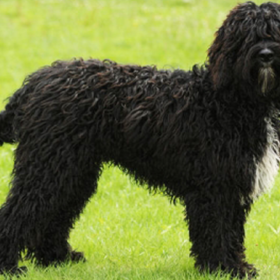 Barbet
Barbet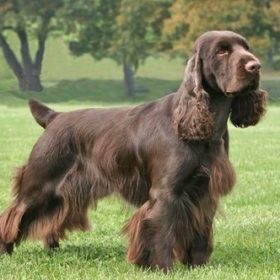 Field Spaniel
Field Spaniel Shar Pei
Shar Pei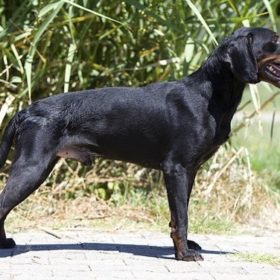 Montenegrin Mountain Hound
Montenegrin Mountain Hound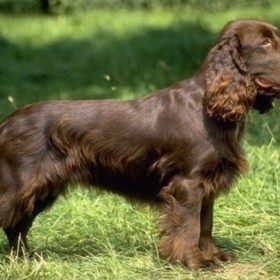 German Spaniel
German Spaniel